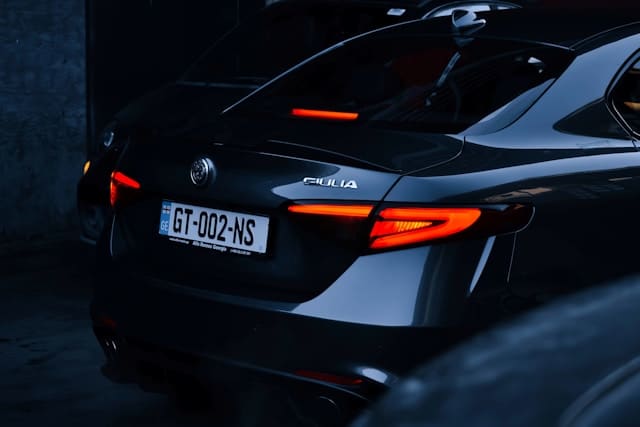Can Upgrading the Suspension Bushings in an Alfa Romeo Giulia Quadrifoglio Reduce NVH?

When it comes to luxury and performance cars, Alfa Romeo has consistently been a name to reckon with. Particularly impressive is the Alfa Romeo Giulia Quadrifoglio, a car that has earned its stripes on the track and in the hearts of auto enthusiasts worldwide. But as good as the Giulia Quadrifoglio is, there is always scope for improvement. One modification you might consider is upgrading the suspension bushings. This raises the question, can upgrading the suspension bushings in an Alfa Romeo Giulia Quadrifoglio reduce Noise, Vibration, and Harshness (NVH)?
The Alfa Romeo Giulia Quadrifoglio: A Brief Overview
The Alfa Romeo Giulia Quadrifoglio is renowned for its superior driving experience, thanks largely to its performance-oriented design. It’s the epitome of the perfect blend between luxury, aesthetics, and performance. The Giulia Quadrifoglio comes with a 2.9-liter twin-turbocharged V6 engine that outputs an impressive 505 horsepower, allowing it to accelerate from 0-60 mph in just 3.7 seconds.
Dans le meme genre : How to Optimize the Battery Performance in a Nissan Leaf for Extended Range?
The car’s suspension is also a key highlight. It features a unique double wishbone layout at the front and a multilink configuration at the rear, providing excellent handling characteristics. However, despite these impressive specs, some owners find the NVH levels in the Giulia Quadrifoglio to be higher than they’d prefer. This is where upgrading the suspension bushings might be a good reply to these concerns.
What Are Suspension Bushings and Why Are They Important?
Suspension bushings are small, mostly rubber components that separate the various parts of your car’s suspension. They’re found in places like control arms, sway bars, shock absorbers, and other suspension parts. Their primary job is to reduce the vibrations between the car’s body and the road, thereby reducing NVH levels.
Sujet a lire : What’s the Ideal Alignment Specs for a Ferrari 488 GTB on a Wet Track?
The rubber bushings in the Giulia Quadrifoglio, while good, do wear out over time and can allow more vibrations to be transmitted to the vehicle’s body, increasing NVH. Upgrading to higher quality bushings could help reduce these issues, providing a smoother, more comfortable driving experience.
Upgrading the Suspension Bushings
So, you’ve decided to upgrade the suspension bushings on your Giulia Quadrifoglio. The question now is, what should you replace them with? Polyurethane bushings are a popular choice, providing a marked improvement over the stock rubber bushings. They’re more durable and resistant to wear, meaning they’ll last longer and maintain their performance over time.
Another advantage of polyurethane bushings is their increased stiffness. This results in improved handling and performance, as there’s less movement in the suspension components. For those who enjoy taking their Giulia Quadrifoglio to the track, this will be a definite plus. However, it’s worth noting that the increased stiffness may result in a slightly harsher ride on rough roads.
The Impact on NVH Levels
Upgrading the suspension bushings in your Giulia Quadrifoglio will have a noticeable effect on NVH levels. As previously discussed, one of the primary functions of the suspension bushings is to absorb vibrations from the road, reducing the amount of noise and harshness felt inside the car.
Polyurethane bushings, with their increased stiffness and durability, will be more effective at reducing NVH levels than the stock rubber bushings. This means that upgrading the bushings will lead to a quieter, smoother ride, particularly at high speeds or on rough surfaces.
However, this doesn’t mean that the improvement will be dramatic. NVH levels are influenced by a range of factors, of which the suspension bushings are just one. Other factors, such as tire pressure, engine noise, and external conditions, will also influence how much noise and vibration you experience while driving.
In conclusion, while upgrading the suspension bushings on your Alfa Romeo Giulia Quadrifoglio won’t eliminate NVH completely, it will make a noticeable difference. So, if you’re seeking to improve your driving experience, it’s a modification worth considering.
The Alfa Romeo Giulia Quadrifoglio and NVH: What Factors at Play?
Take a moment to delve deeper into the phenomenon of Noise, Vibration, and Harshness (NVH) in the Alfa Romeo Giulia Quadrifoglio. To properly understand why upgrading the suspension bushings can make a difference, it’s crucial to first identify the elements that contribute to NVH.
NVH is a term that encapsulates all the undesirable sounds and vibrations that emanate from a car. In the case of the Giulia Quadrifoglio, NVH can originate from several sources. The engine, exhaust, and interior suspension are the primary contributors.
The Giulia Quadrifoglio’s 2.9-liter twin-turbocharged V6 engine, while delivering a thrilling 505 horsepower, can generate a substantial amount of noise. The engine exhaust and interior suspension contribute to the overall NVH levels. Even the exhilarating driving experience that the Giulia Quadrifoglio provides, complete with rapid acceleration and deceleration, can add to the NVH levels.
Additionally, external factors such as road conditions and tire pressure play a significant role in the NVH experience. If the roads are rough, or the tires are not inflated to the optimum pressure, the resulting vibrations will be greater, leading to higher NVH levels. The Giulia Stelvio, the sibling of the Giulia Quadrifoglio, also faces similar NVH challenges.
Remember, while the suspension bushings might not be the primary source of NVH, they do play a crucial role in controlling it. Upgrading these bushings can help counteract the NVH caused by other factors to a significant extent, creating a smoother and more enjoyable ride.
Conclusion: Upgrading Suspension Bushings in Your Alfa Romeo
So, can upgrading the suspension bushings in your Alfa Romeo Giulia Quadrifoglio reduce NVH? The answer is a resounding yes, though it’s wise to remember that upgrading the bushings is not a standalone solution. It’s an effective way to control NVH levels, but other factors such as road conditions, tire pressure, and engine noise also play a key role.
Consider the upgrade to polyurethane bushings as part of a broader strategy to enhance the driving experience in your Giulia Quadrifoglio. When complemented with other adjustments such as optimal tire pressure, ECU tuning, and regular maintenance, the impact on NVH will be far more remarkable.
In addition to reducing NVH, the switch from rubber to polyurethane bushings will also offer better handling, making your Giulia Quadrifoglio ready for both comfortable drives and exhilarating racing experiences. If you find joy in pushing the performance limits of your car, be it on the track or the open road, then upgrading the suspension bushings can be an excellent move.
The Alfa Romeo Giulia Quadrifoglio is a shining example of a premium midsize car that offers the best of luxury and performance. Upgrading the suspension bushings is just one way to further refine this automobile’s stellar attributes. It’s a step towards making the best even better, enhancing your driving experience to a level that embodies Alfa Romeo’s race-inspired heritage. After all, isn’t that what owning an Alfa Romeo is all about?
